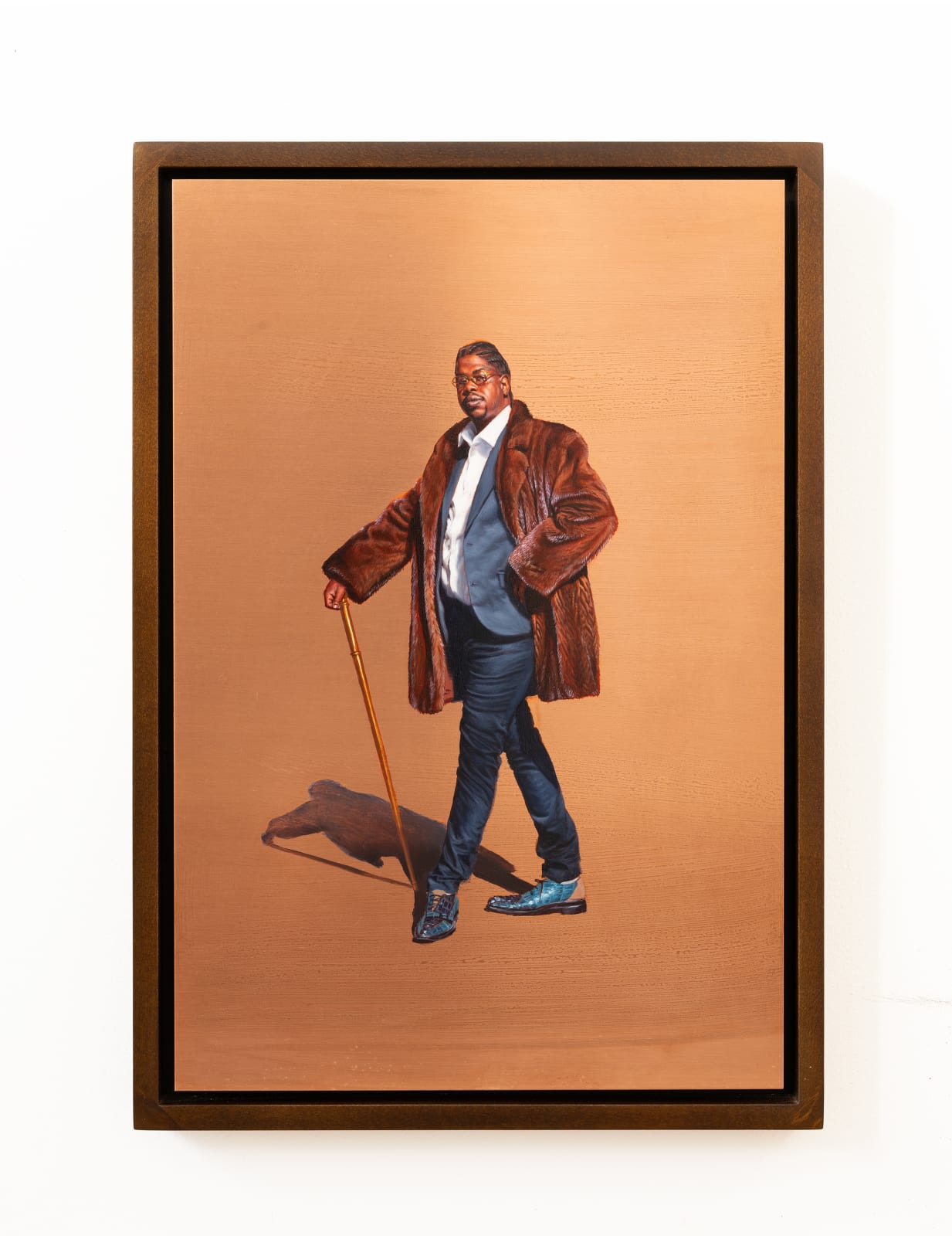
 Installation view: Filling in the Pieces in Black, Curated by June Sarpong, 2023, MARUANI MERCIER, Brussels, Belgium
Installation view: Filling in the Pieces in Black, Curated by June Sarpong, 2023, MARUANI MERCIER, Brussels, Belgium
Mario Moore
18 x 12 in
The works from this series are based on a series that investigates the origin of French Detroit and the fur trade of the 18th and 19th century that was part of the western expansion of the US. Black Detroiters specifically embrace a certain style that uses the fur as a trademark. These works show that sense of contemporary style but also look at the history of slavery in Canada and Michigan to expand the West. Black slaves were used to transport furs as part of the lucrative fur trade for the French and English in Detroit.
All works on copper uses the material as a question to the viewer to reflect and obscure one’s own identity. Using W.E.B Dubois idea of double consciousness it challenges the viewer to sympathise with the Black body and see a veiled reflection of themselves in the copper surface.
'1701' gets its title from the year Detroit was founded by the French. The date is also reflected in a portrait painting of King Louis XIV by Hyancinthe Rigaud completed in 1701. which inspired the figure's pose in Moore's painting. Another reference for the date is the founding of Yale University where Moore received his MFA, a reflection on the maker of this piece. The figure in the painting embraces quintessential Detroit style and takes on the French King's nickname “The Fashion King”.

